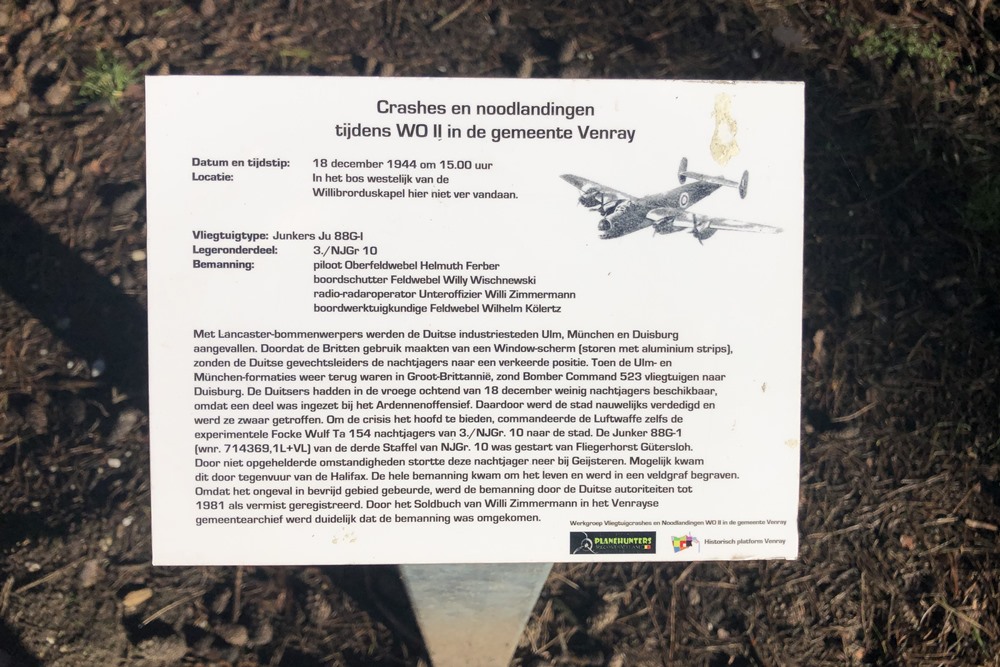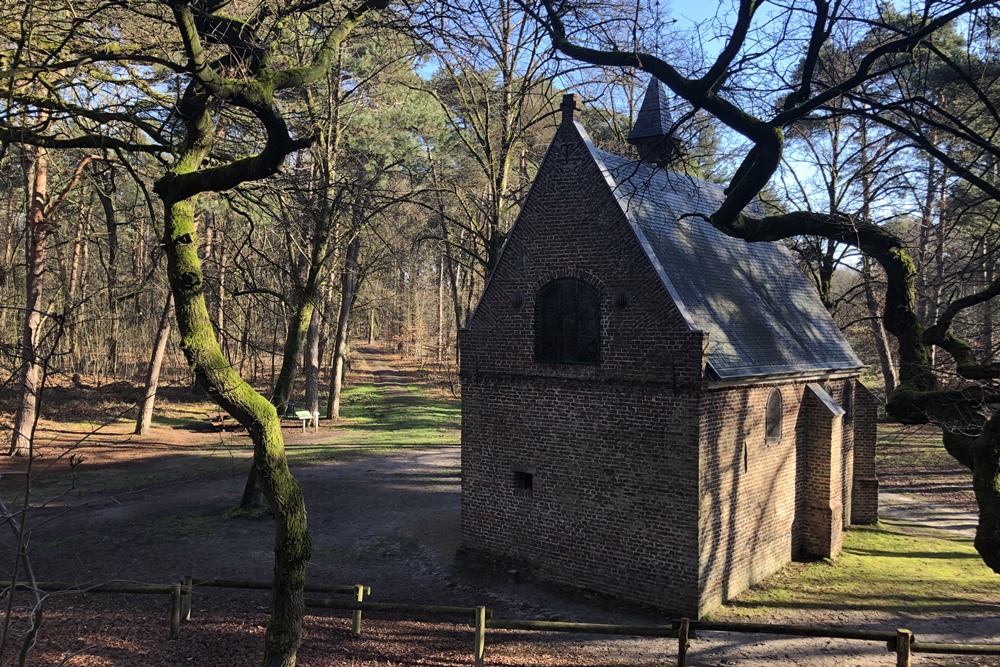Monument Junkers Ju88G-I
Date and time: December 18, 1944 at 3 p.m.
Location: In the forest to the west of the Willibrorduskapel not far from here.
Aircraft type: Junkers Ju 88G-I
Military unit: 3./NJGr 10
Crew:
- pilot Oberfeldwebel Helmuth Ferber
- Air Gunner Feldwebel Willy Wischnewski
- radio radar operator Unteroffizier Willi Zimmermann
- flight engineer Feldwebel Wilhelm Kölertz
Lancaster bombers attacked the German industrial cities of Ulm, Munich and Duisburg. Because the British used a Window screen, the German battle leaders sent the night fighters to the wrong position. When the Ulm and Munich formations were back in Britain, Bomber Command sent 523 planes to Duisburg. The Germans had few night fighters available in the early morning of December 18, because some of them were deployed in the Battle of the Bulge. As a result, the city was barely defended and hit. To face the crisis, the Luftwaffe itself commanded the experimental Focke Wulf Ta 154 night fighters from 3./NJGr. 10 to town. The Junker 88G-1 (wnr. 714369, 1L + VL) of the third Staffel of NJGr. 10 was started from Fliegerhorst Gütersloh. Due to unknown circumstances, this night fighter crashed near Geijsteren. This may have been due to backfire from the Halifax. The entire crew was killed and buried in a field grave. Because the accident happened in liberated area, the crew was registered as missing by the German authority until 1981. The Soldbuch of Willi Zimmermann in the Venray municipal archives made it clear that the crew had died.
Do you have more information about this location? Inform us!
Source
- Text: Jeroen Koppes
- Photos: Jeroen Koppes
Nearby
Museum
- War Museum Overloon - Overloon
- Museum "Van Postzegel tot Tank" - Groeningen
- Exposition 40-45 - Blitterswijck
Point of interest
- Cycling Route Maashees - Execution Place Pastor Janssen - Maashees
- Cycling Route Maashees - Destroyed Silo - Maashees
- Cycling Route Maashees - Mobilization Headquarters - Maashees
Monument
- Liberation Route Marker 201: Stand firm at all cost - Geijsteren
- Sint-Anna monument - Venray
- Memorial 'Tracks that Were' Oostrum - Oostrum
Cemetery
- Dutch War Graves Venray - Venray
- Dutch war Grave Meerlo - Meerlo (Horst aan de Maas)
- Commonwealth War Cemetery Overloon - Overloon
Remembrance Stone
- Stumbling Stone Spoorstraat 1 - Tienray
- Stumbling Stone Spoorstraat 10 - Tienray
- Stumbling Stone Spoorstraat 21 - Tienray






